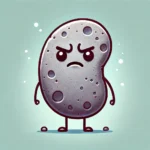
Are you worried about calcium and its link to kidney stones? It’s a common concern, and many people mistakenly believe that reducing calcium intake is the solution.
However, the relationship between calcium and kidney stones is more complex. Dr. Mistry, Board-Certified Urologist and founder of NAU Urology Specialists, and Donna Lee, Director of Business Development, are here to shed light on this.
The Basics of Kidney Stone Formation
Kidney stones form when certain substances, like calcium, oxalate, and uric acid, become too concentrated in your urine. When calcium levels get too high, your kidneys usually step in to filter out the excess.
A key goal is to produce two liters of urine daily to decrease kidney stone development. This often involves addressing issues such as an enlarged prostate to allow free urination.
Hydration and Urinary Frequency
We encourage good hydration. “You need to make two liters of urine a day,” is something we constantly say. A typical bladder holds about 300 milliliters, or 10 ounces, similar to a soda can.
Frequent urination might not just be due to increased water. It could indicate an overactive bladder. If you’re urinating every half hour, your bladder’s “settings” might need recalibration.
Your body typically produces about an ounce of urine per hour, though this can vary. Ideally, you should urinate every three to four hours.
Overactive Bladder: A Common Culprit
An overactive bladder (OAB) can make you feel the urge to urinate more often. This occurs when the bladder signals the need to pee even when it’s not full.
Treatments like pelvic floor physical therapy and OAB medications can help. For many men, an enlarged prostate is often the cause (80% of the time), making treatment of prostate issues or BPH critical for those with chronic kidney stones.
Calcium’s Role in Kidney Stones
It’s true that many kidney stones are calcium-based. Dietary calcium is important for healthy bones, and it’s crucial to consume it in the right amounts.
People often experience fractures from minor falls. This is often caused by poor kidney health and necessitates a review of overall bone health.
The Importance of Bone Health
Maintaining strong bones is important, particularly as we age. Conditions like osteopenia can weaken bones, making them prone to fractures. A DEXA scan (bone mineral density scan) can assess your bone density.
Vitamin D and Bone Health
Vitamin D is essential for calcium absorption and bone health. Sometimes, our bodies break down bone and ligaments due to hormonal changes.
Low vitamin D can affect how your body uses calcium, indirectly influencing calcium stone formation. Keeping vitamin D levels balanced helps prevent calcium stones and maintain overall kidney health.
Testosterone’s impact
Low testosterone is a serious concern at our clinic. If you have fractures, we recommend testing your testosterone levels to see if treatment is needed.
The Real Culprits: Sodium and Oxalate
Excess sodium is often a bigger problem than calcium intake in stone formation. Too much salt leads to increased calcium absorption, which the kidneys excrete, causing problems. Here’s a look at the sodium content in some common foods:
| Food Item | Serving Size | Sodium Content (mg) |
|---|---|---|
| Fast food cheeseburger | 1 burger | 700-1200 |
| Pizza slice | 1 slice | 400-800 |
| Instant Ramen noodles | 1 package | 1200-1800 |
| Potato chips | 1 oz (small bag) | 150-250 |
| Pretzels | 1 oz | 300-500 |
| Processed deli meat (turkey) | 2 oz | 300-600 |
| Canned Soup (Chicken Noodle) | 1 cup | 600-900 |
High sodium intake can lead to the formation of calcium oxalate stones. It is important for people to be aware of calcium oxalate in the urinary tract.
The Problem With Oxalates
Oxalates in foods like leafy vegetables, chocolate, tea, and nuts can increase kidney stone risk. The National Kidney Foundation provides resources to help you manage your diet, which is helpful if you are prone to oxalate stones.
Limiting foods that can bind with calcium in the urinary tract to form calcium oxalate stones can decrease risk. Be sure to stay away from things that will create a calcium stone.
Balancing Act
Managing kidney stone risk isn’t just about cutting calcium. It involves reducing sodium and understanding which foods are high in oxalates.
A calcium supplement is not always a direct cause of a calcium stone, as long as it is within healthy ranges. But keep in mind, excess calcium supplementation can be a cause. A proper diet reduces the liklihood of calcium stones.
Practical Steps for Preventing Calcium and Kidney Stones
Preventing kidney stones involves practical daily adjustments, similar to managing an overactive bladder. Being proactive in your lifestyle can significantly reduce chronic kidney stone development.
Kidney patients should seek guidence from a doctor, dietician, or other health care provider. NAU Urology Specialists develop personalized plans to help patients with kidney stone issues.
Monitor Your Urine Output
You can estimate your urine volume at home using a container. Reaching the two-liter daily urine goal requires increasing your fluid intake.
Consider Your Bladder’s Capacity
Assessing your urinary health is important. Donna Lee drinks about two 32oz. Stanley cups of water, close to the recommended three liters, considering factors that reduce urine output.
Try to drink when you feel thirsty, but remember that these receptors may not function as well as they did in your youth. Kidney disease can be devistating if the proper precautions are not put into place.
Get Your Hormones in Order
Maintaining hormone levels helps improve bone density and reduce injury risk. Thirst receptors may not function properly as we age, leading to things like kidney disease if unaddressed.
Addressing hormone levels are a foundational part of an overall strategy to fight against chronic kidney disease. This could include kidney transplant for people at the more extreme cases.
When is Enough, Enough
There are various guidelines for optimal diet and drink portions. As we age, especially past our 60s, balanced mineral intake becomes less automatic and chronic dehydration becomes more common.
The Mayo Clinic recommends reviewing the variety of different minerals the body needs. Staying on top of things early on, helps prevent future complications of kidney disease.
Embrace the Holistic Mindset
People are living longer and staying active later in life. Maintaining optimal hormones and avoiding injury is key. Keeping sodium and things that increase the likelyhood of struvite stones is important.
Other featured topics to research include the nature of uric acid stones and acid stones.
Conclusion
Managing kidney stones and calcium is complex. It requires a multifaceted approach.
Staying proactive with a healthy lifestyle, especially as we age, is important. Understanding the interplay between calcium and kidney stones helps in making real, actionable changes for a healthier life.
It’s never too late to address things, and learn what you should be reviewing on a routine basis, like animal protein intake amounts. A clinical trial done by the National Kidney Foundation, showed that routine habit adjustments are crucial for things such as the patient journey.















